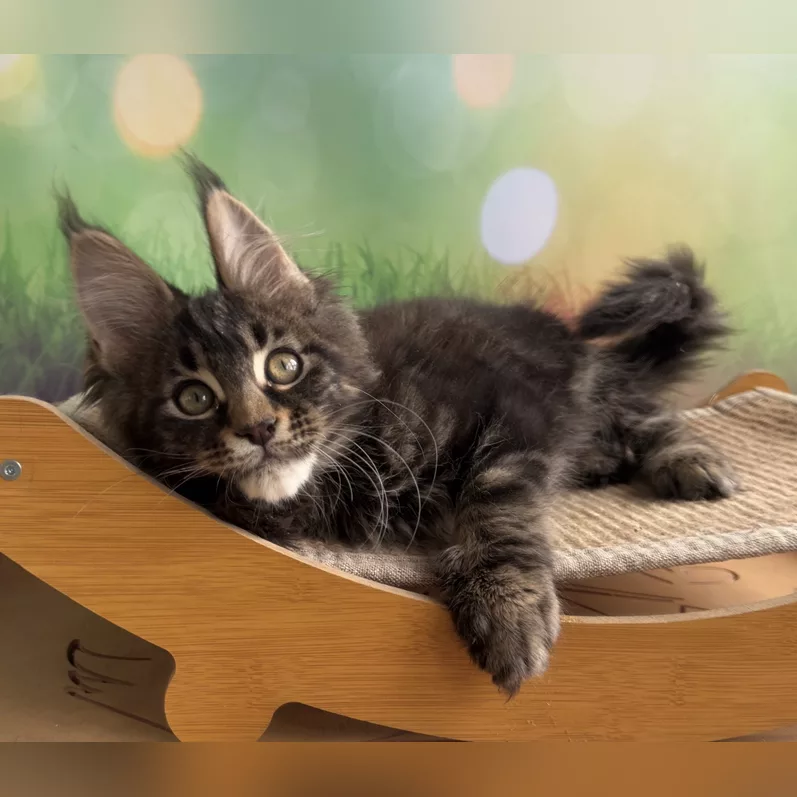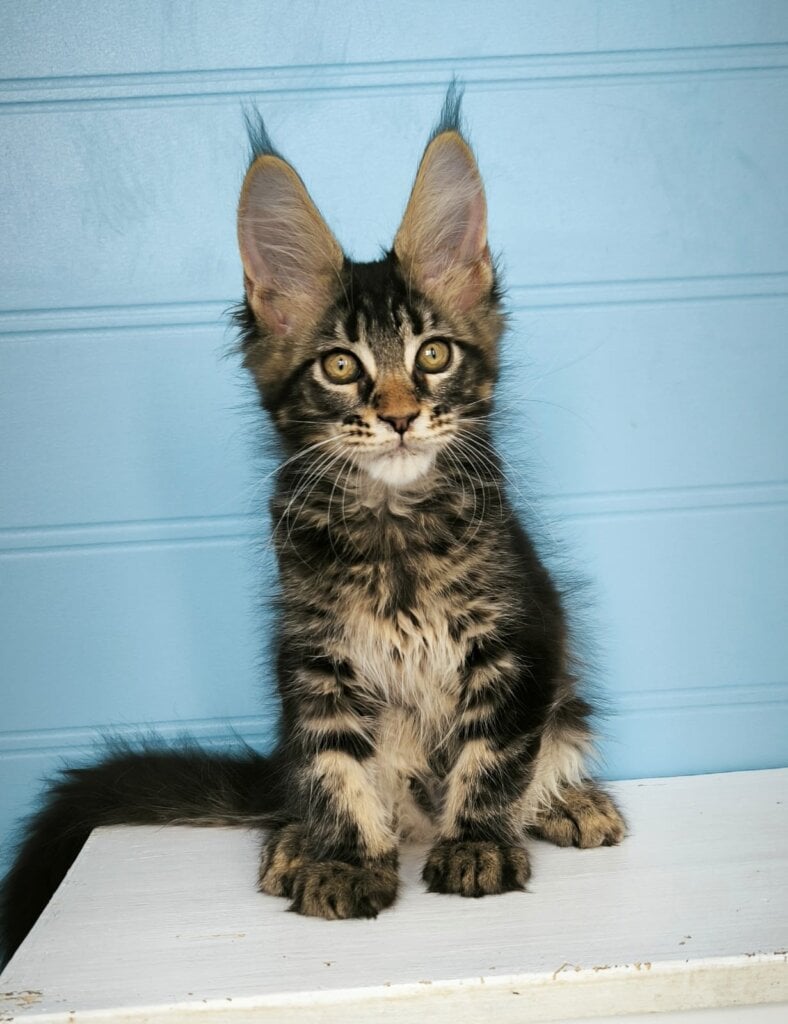Key Takeaways
-
Start with the right supplies. Gather must-haves like a bed, scratching post, food, and water dishes to help your kitten settle in.
-
Safety is a priority. Kitten-proof your home, removing hazards and giving him a space to explore and play.
-
Introduce slowly. Allow your kitten to meet family members and other pets gradually to encourage a smooth integration.
-
Put health first. Schedule a vet visit to make sure your kitten is healthy and has vaccinations up to date.
-
Establish a routine. Daily feeding and litter training routines also acclimate your kitten to its new surroundings.
-
Set up an affectionate, playful, and patient environment for your new kitten to settle in and start feeling comfortable.
Bringing a new kitten home changed everything. You have to have a plan to make it smooth and easy. Begin with a checklist of what you need, from food to toys to a nice place to sleep.
Change your home to become a safe space. Kittens explore everything, so be ready for surprises. Expect things to change and adjust fast. Your new kitten provides joy but also demands care and attention.
Embrace the responsibility with courage. Cats are comforting and provide companionship, especially for children. MeoWoff prepares your kitten to be healthy and happy, and ready to join your life.
Get prepared for purrs and cuddles.
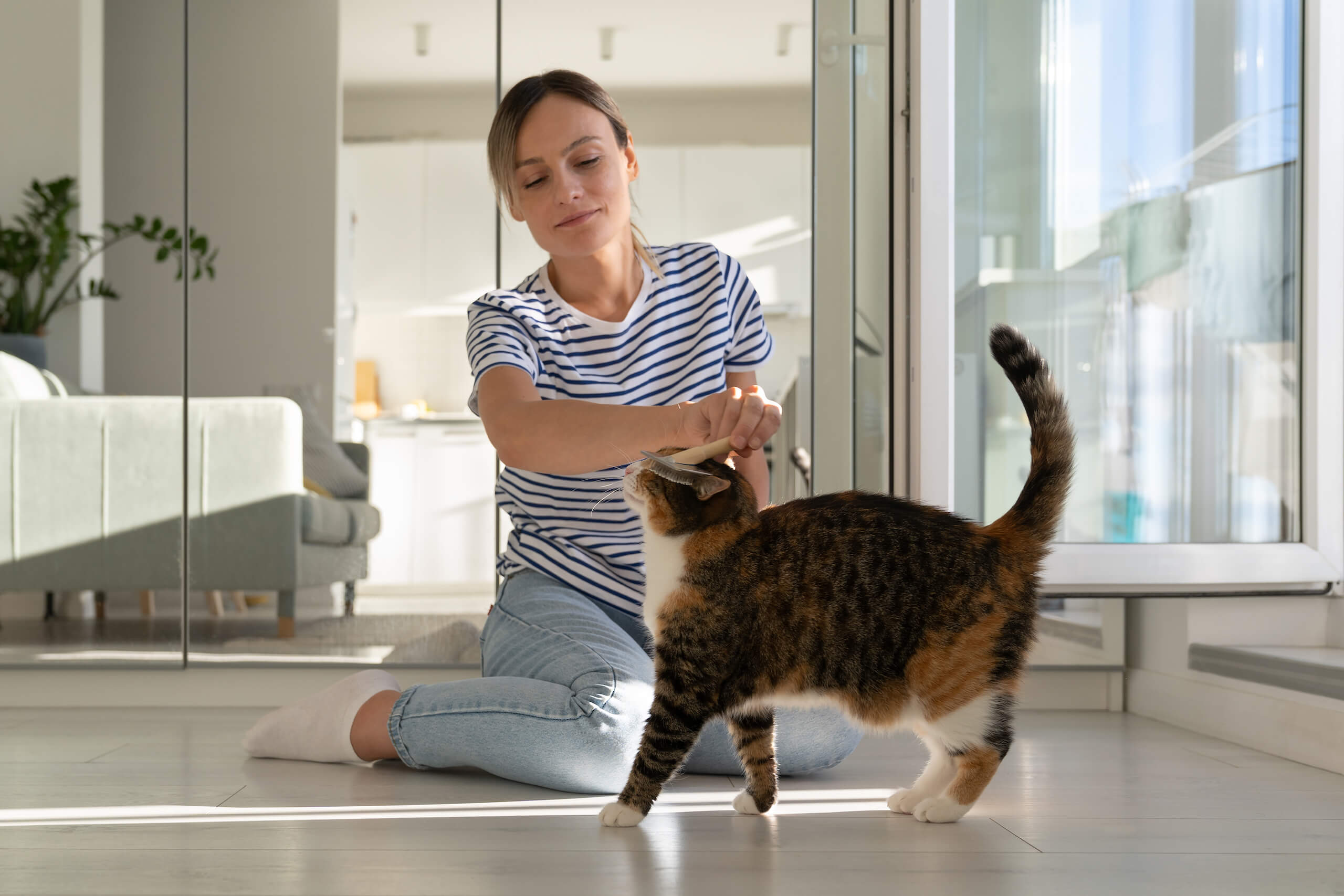
Essential Kitten Supplies
When you welcome a new kitten into your home, you are filled with joy. To make their arrival as smooth and enjoyable as possible, it’s important to be as prepared as possible. Let’s discuss all the goodies you’ll want to get so that you can make your little furball feel at home.
We’ll cover the basics and even a few extras that’ll keep your kitten happy and healthy.
1. Select a Cat Carrier
You’ll need a cat carrier. Think of it as your kitten’s personal car seat. Pick one that’s solid and large enough for them to wiggle around a little.
Ensure the carrier has outstanding ventilation. Secure latches are a must too – no one wants an escape artist running wild! You may want to acclimate your kitten to the carrier prior to any major voyages to help calm their nerves. An easy-to-clean carrier is a lifesaver when things get messy!
2. Choose Kitten Food
Choosing the right food is like laying a firm foundation for your kitten’s development. Choose kitten food that’s high quality and meets AAFCO standards to make sure your new friend gets everything they need.
If possible, ask the previous caretaker what food they were using to keep things consistent. Brands like Purina ONE +Plus Kitten Formula are formulated specifically for growing kittens under six months. Keep in mind, when transitioning to new food, switch it up gradually to avoid stomach issues.
3. Get Food and Water Dishes
Opt for shallow, stable dishes when feeding your kitten. Choose materials such as stainless steel or ceramic with lead-free glaze.
These materials are also safe and easy to clean, which is a win-win. Be sure to place the dishes somewhere quiet and away from the litter box to promote peaceful dining. It’s about making happy eating spaces for your small child!
4. Stock Up on Treats
Treats can be your secret weapon for bonding and training. Instead, opt for healthy options that are appropriate for kittens, and use them to reinforce positive behavior.
Just be mindful of the quantity – treats should make up no more than 10% of their daily calories. Store them in a cool, dry place to keep them fresh and tasty.
5. Buy a Nail Clipper
In the realm of grooming, you need a solid nail clipper. To stay safe and simple, find one that’s specifically made for cats.
Start getting your kitten used to the idea early on to reduce any fear. Regular clipping sessions keep their paws in tip-top shape. Don’t forget to shower them with treats and praise to make nail trimming a positive experience!
6. Pick a Brush or Comb
Brushing your kitten isn’t just about keeping it looking cute – it’s a great way to bond too! Use a brush appropriate for your kitten’s coat and begin on a small scale with brief, soft brushing sessions.
Regular brushing prevents matting and cuts down on shedding. Plus, it’s a chance for some extra snuggles!
7. Acquire Dental Care Items
Good oral hygiene starts young, so pick up some kitten-specific dental care products. Introduce these gradually to make them part of your kitten’s routine.
Routine vet visits keep their teeth healthy. You can use dental treats to freshen their breath, too!
8. Gather Engaging Toys
Toys are essential for keeping your kitten entertained and mentally stimulated. Offer a variety of toys that stimulate their natural inclinations, such as chasing and pouncing.
Rotate them frequently to keep it fresh. Always choose safe toys that don’t have small pieces.
9. Find a Scratching Post
You need a scratching post so your kitten can stop shredding your furniture. Find a sturdy post and put it where your kitten spends a lot of time.
You can sprinkle some catnip on it to get them interested; half of all cats just love the stuff!
10. Set Up a Comfortable Bed
Your kitten will need a warm place to sleep, so choose a soft bed that will feel safe and secure. Put it in a back room somewhere to be left alone.
Frequently wash the bedding to avoid unpleasant smells. The addition of a familiar scent will make your kitten feel even more at home.
11. Consider a Cat Tree
Cat trees are great for climbing and exploring, something kittens love to do. Make sure it’s secure and safe, and place it somewhere you can see it, like by the window.
If you place toys or treats on it, you can help prompt your kitten to use it.
12. Prepare Litter and Box
Selecting the proper litter box and litter is important. A box with a low front opening made it easy for kittens to access their litter.
There’s also non-clumping litter, which works better for kittens under four months. Scoop the box every day to keep it clean and inviting.
13. Secure an ID Tag and Collar
Make sure you get a breakaway collar and put an ID tag with your contact information on it. This helps with quick identification if your kitten wanders off.
As they grow, check the collar’s fit frequently. For added peace of mind, consider getting your kitten microchipped.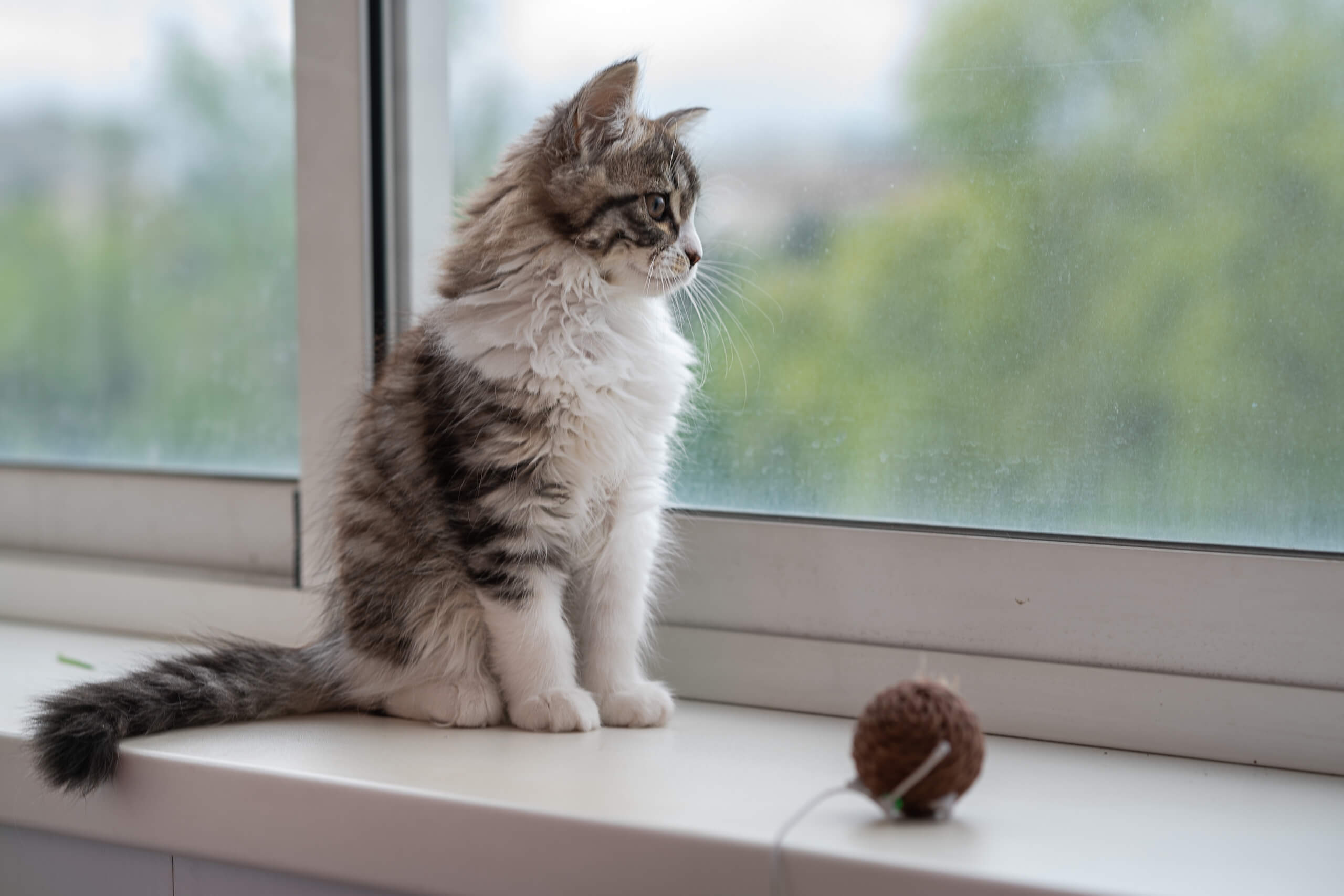
Preparing Your Home for a Kitten
Bringing a new kitten into your home is deeply pleasurable. You’ll still need to prepare to keep your new furry friend safe and happy. Here’s how to get your home kitten-ready.
Kitten-Proof the Living Space
To start, you’ll want to take a good look around your home to identify potential dangers. It’s like child-proofing, but for a small but feisty cat that has an eye for mischief. Look around to see if there’s anything that could be harmful.
Be aware of sharp objects, small things that can be swallowed, or poisonous plants. Kittens love to chew on cords and wires, so make sure you have them secured. It’ll prevent you from getting any nasty surprises or knots.
Baby gates or barriers can help keep your kitten out of certain areas. This way, you make sure they only see the safe spaces until they’re ready. You’ll also want to stash away cleaning supplies and medications, way out of their reach.
Covering electrical outlets and tucking away loose wires is a good idea, too. Kittens are very curious little creatures. They want to get into everything, so take the time to childproof their environment.
Here’s a quick checklist to help you kitten-proof:
- Remove sharp objects and small swallowable items
- Secure cords and cover outlets
- Store away cleaning supplies and meds
- Use baby gates for off-limit areas
Establish Safe Zones for Kitten
Once you’ve dealt with the hazards, it’s time to create some comfy safe zones. Namely, places where your kitten can chill out and feel secure. Call it their little corner of the world.
Put some soft bedding and perhaps a few toys there so they can calm down. Kittens sleep up to 16 hours a day, so a cozy place is essential.
Monitor these zones to keep stress at bay. Gradually introduce your kitten to different areas of your home. This process allows them to get comfortable in their own time.
This step is all about getting them comfortable in their new surroundings. Kittens crave bonding time with you. Join them in their safe zones to play and build trust together!
Modify Home for Kitten Safety
To allow your kitten to explore your house safely, move your furniture around a little bit. That way, your inquisitive little buddy can wander without bumping into anything troublesome.
Consider taking away fragile items or decorations that could easily fall over. Windows and balconies also require special attention; make sure they’re properly secured to avoid any accidental falls.
Keeping doors closed is another clever way to stop those daring escapes. If your kitten loves a little outdoor time, always supervise those adventures. Kittens are energetic and playful little powerhouses.
They also require quiet time to rest and recharge. Kittens are curious little beings with their own personalities and quirks. They need our attention and care, especially in those first few weeks.
Set things up in your home in a way that will allow you to flourish. This will bless your family to pieces!
Integrating Kitten into Family
Okay, so you’re adding a kitten to the family. That’s a big deal! It’s not a matter of acquiring a pet; it’s a matter of intertwining a new friend into the family fabric. Let’s jump into how we can make this a painless and joyous experience.
Discuss Changes with Family Members
Get everyone on the same page. Have a family meeting and discuss what it means to have a new kitten in the house. This can be a really enjoyable and eye-opening conversation. Everyone is bound to have questions – and even a worry or two about the new fluff ball moving in. It’s important to ask these questions early on.
Discuss who is going to do what when it comes to caring for the kitten. Perhaps the kids can do the feeding, and you can handle the vet visits. It is all about teamwork!
Of course, patience is key. Adapting to a new environment is a journey for the kitten as much as it is for you. Knowing this, along with setting realistic expectations, teaches a sense of ownership and empathy to everyone.
Introduce Kitten to Household
Now, when the kitten comes, it’s all about slowing down for me. Cats are truly sensory creatures – they want to smell, then hear, then see what’s new. You’ll want to introduce your kitten to family members gradually. That helps mitigate any anxiety they might experience.
Give the kitten some time to freely explore your house. Use treats and toys to make these introductions fun and positive. Monitor these interactions to keep things from getting too rowdy.
You’re constructing a secure shelter for your new friend. Keep in mind that 97% of cats will get used to their new families after a while, so give it some time!
Socialize Kitten with Pets
If you’ve got other pets, introducing them to the new kitten can be a bit of a dance. So take it slow and steady. Start off with supervised meetings so that no one gets carried away. It may be appropriate to even use a leash for dogs in the beginning.
Positive reinforcement, such as treats for nice behavior, goes a long way. Here’s a quick guide to help:
- Introduce smells first.
- Allow pets to hear and then see each other.
- Supervised meetings initially.
- Reward friendly behavior.
This process will take at least a week, but possibly longer, depending on your pets’ personalities. For example, an “only child” cat may require more time to acclimate to a new kitten.
It’s normal if there’s some hissing or tail swishing at first. This tends to settle down after a few days. In cases where you’re introducing two cats with different personalities, patience is even more essential.
If you want a companion who loves peace and doesn’t want to start World War 3, adopt a kitten 6-12 months old. They’re typically fixed and socialized, and they’re just the right amount of playful energy in your home.

Health and Veterinary Care
Now, I want to talk about something really important – health and vet care. You want your new fluffy pal to be happy and healthy, right? So, here’s what we have to do.
Schedule First Vet Appointment
Get that vet appointment booked, stat! Ideally, have it completed within two weeks of bringing your kitten home. Believe me, this is important. This initial visit lays the groundwork for your kitten’s health journey.
You want a vet who’s a cat expert, who knows the ins and outs of the kitty world. If you’re saying to yourself, “My kitten’s never been in a carrier, what do I do?” Don’t fret! Kick things off by allowing them to browse it at home.
Perhaps add a toy or treat to make it more enticing. If you happen to have any adoption papers or health records, do bring those along. The vet will love you for it!
Find a Reliable Veterinarian
Finding the right vet is as good as finding a good friend for your kitten. Do a little research – read some reviews or ask some people. Those mates or family members that have animals are absolute goldmines of information.
Once you have a few names, pay the clinic a visit. Check it out, speak to the employees, and find out if they fit with you and your kitten. The vet should ideally be knowledgeable about kittens, their care, and vaccinations.
Remember, a relationship with the vet from day one is essential for your kitten’s comfort in future visits.
Prepare for Vet Visits
When it’s time for the vet visit, gather all you need – health records, carrier, maybe a comforting toy. Familiarize your kitten with the carrier ahead of time to make the trip more low-stress.
It can be a long wait at the clinic, so having a toy can be a life-saver. Relax during the visit. Your kitten picks up on your vibes, so staying chill helps them stay relaxed.
Fun fact: The first vet visit usually takes about 30 minutes to an hour, so plan accordingly.
Kitten Essentials Checklist:
- Kitten food
- Bowls
- Litter box
- Brush
- Cat bed
- Toys
- Scratching post/pad
- Safety collar with ID tag
- Travel carrier
Important Facts to Know
Vaccinations are a biggie! They should begin at 6 – 8 weeks and be repeated every 3 – 4 weeks until they are approximately 16 weeks old. This keeps them safe from nasty diseases.
Brushing those little teeth every day is best! Let’s be real – once a week is more realistic for most people. The cost of the first vet visit varies, so perhaps call in advance to ask what’s included.
It’s your actions and interactions with your kitten today that spell out how they act in the future. Be careful how you socialize them! Get them accustomed to a range of experiences!
It’s vital for your kitten to be able to enjoy human contact, so keeping interactions positive is important, according to VCA Hospitals.
Feeding and Litter Training
Yeah, very true, and they’re kind of trained like that. In preparation for bringing a new kitten into your home? Awesome! Let’s chat about two of the most important things you gotta nail down: feeding and litter training. I promise, getting these right will make life with your new furry pal a whole lot smoother.
Create a Feeding Routine
Okay, first things first – kittens are little balls of energy and they need the right fuel to grow and play. Setting a feeding schedule is more than just ensuring your cat has food. It’s important to make them comfortable as they transition to a new home.
For small kittens, consider providing several small meals a day. It’s like having a little snack drawer for your kid to keep them fueled up.
-
Determine meal times: For kittens, regular meal times are crucial. Depending on their age, they may need to eat three to four times a day. Younger kittens, say under six months, will usually need more frequent feedings.
-
As your kitten gets older, you’ll notice their eating habits change. You may begin with several small meals and slowly progress to two large meals a day. Watch their appetite and weight for guidance.
-
Keep it consistent: Just like us, kittens are creatures of habit. Having a regular feeding schedule helps them know what to expect. It’s like us when we look forward to dinner at a certain time every night!
Set Up Litter Box Properly
This is a biggie! Pick the right place so your kitten feels at home using a potty spot. Set it up right to make it a friendly place.
-
Positioning is key: Place the litter box in a quiet, easily accessible location. Someplace they can access easily, but that still provides some seclusion – so it’s kind of like giving them their own private restroom.
-
Size and accessibility: Make sure the box is big enough for your kitten to move around comfortably. For young kittens, a low entry box can make all the difference.
-
Cats are clean freaks, and they prefer clean boxes. Scoop out the poop whenever they go, and manage the urine clumps daily or every other day. It’s like dealing with chores – keep it clean, and everyone’s happier!
Here’s a quick checklist for setting up a litter box:
- Quiet and accessible location
- Large enough for comfort
- Low entry for easy access
- Cleanliness is a must
Train Kitten to Use Litter Box
To train your kitten to use the litter box, you’ll need patience and good vibes. Kittens typically pick this up by about 8 to 12 weeks, but some may take longer, even a month. Not to worry – it’s all part of the process!
-
Encouragement works wonders: After meals and naps, gently place your kitten in the litter box. This allows them to associate the box with their potty needs.
-
Whenever they use the box, give them a little praise or a treat. It’s more like, “Good job, buddy!”
-
Patience is key: Accidents will happen. Instead of getting mad, clean up and encourage your kitten to try again. Punishment induces fear, and we don’t want that.
For example, did you know that almost 90% of cats are right-pawed? This can even influence their litter box use.
For households with multiple cats, it’s best to have one box per cat, plus an extra. If you have three cats, you should ideally have four boxes.
Creating a Welcoming Environment
Hey! You’re about to bring a fuzzy little friend into your life! I couldn’t be more excited for you. Let’s talk about how to make your house feel like a kitty paradise right from the get-go.
Set Up Kitten’s Personal Area
You’re going to need a special corner for your kitten first. Think of it as their little kingdom, with a comfy bed, toys, and a litter box. Using barriers or gates is a smart way to protect this area. It keeps other pets and curious toddlers safely away.
Consider adding something familiar, such as a blanket from their previous house. This will make them feel secure. Remember, safety and cleanliness are paramount! Make a habit of going to their space at least occasionally.
Here’s a quick list to get you sorted:
- Designate a comfy spot with a bed, toys, and a litter box.
- Use barriers to keep the area secure.
- Add familiar items for comfort.
- Regularly check for safety and cleanliness.
Choose Cozy Bedding Options
Your kitten will love soft and warm materials to snuggle into. Put the bedding in a lonely corner, where they can get some Z’s without any interruptions. Wash bedding often so it feels fresh and inviting.
If you live in a colder area, consider getting a heated blanket. It will keep your little friend warm and cozy.
Select Fun and Interactive Toys
Curious and playful by nature, kittens need plenty of variety in their toys. Opt for toys that get them both up on their feet and thinking, such as feather wands or puzzle toys. Rotating toys keeps them mixing it up and moving.
As always, be sure that the toys are safe – keep away from anything small or with loose parts that present a choking hazard. Here’s a quick guide on what to consider:
- Select a combination of toys for physical and mental stimulation.
- Regularly swap out toys to maintain interest.
- Always choose safe, age-appropriate toys.
Additional Tips for a Smooth Transition
To help your kitten feel at home, create a few hiding spots. They intuitively desire a secret place where they feel sheltered. When they’re ready, they can pop out and embrace the world.
At first, keeping them in a single room can ease them into it without being overwhelmed. A sturdy scratching post is a nice addition as well, giving them a place to stretch and exercise.
Gently introduce them to new faces, sounds, and smells, so they don’t get overwhelmed. It’s important to stick to a consistent routine. Set regular mealtimes and play sessions to encourage your kitten to settle in and feel secure.
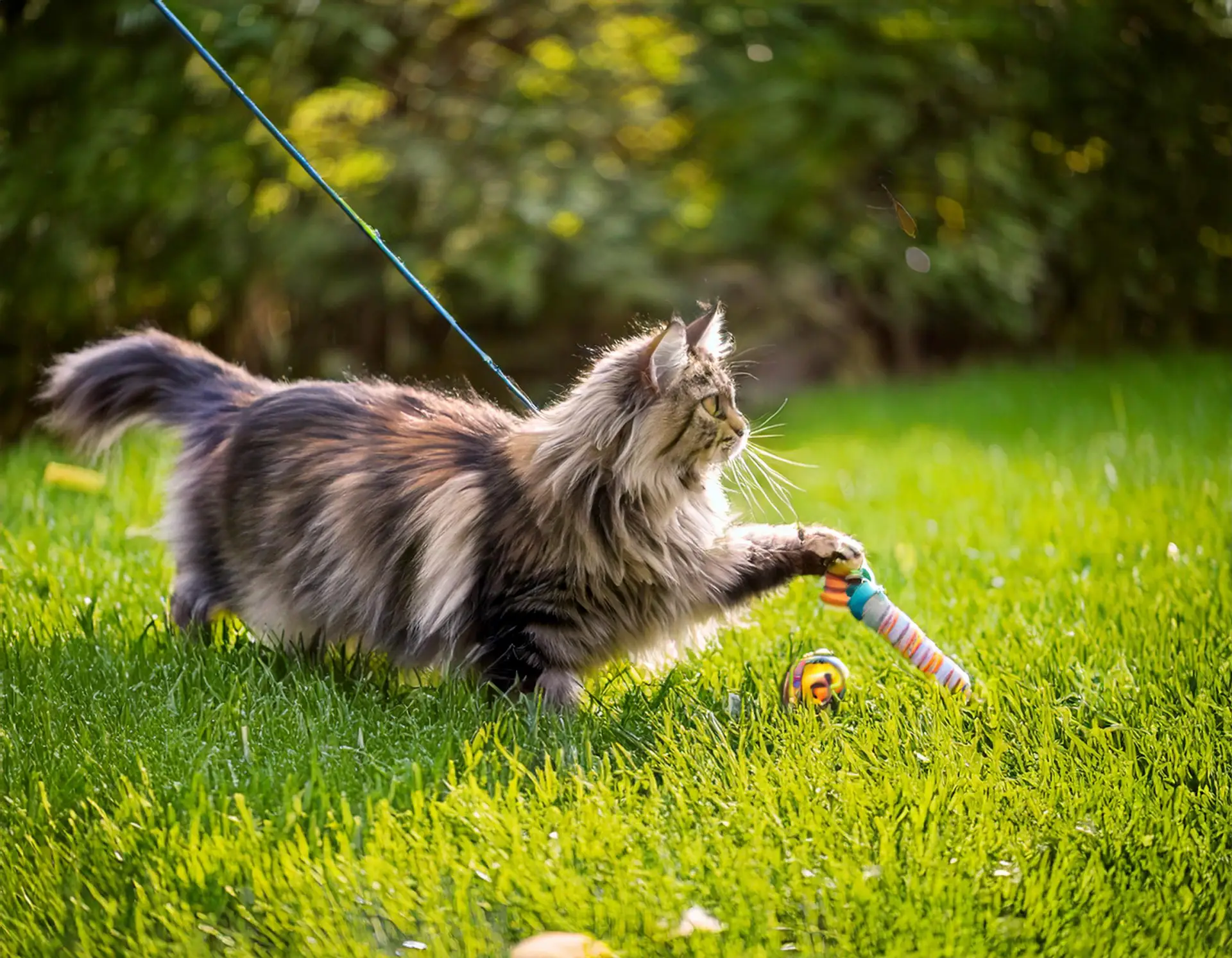
Conclusion
You’re all set for your new furry friend! A kitten’s more than a pet; they’re family. We at MeoWoff love to see these little furballs bring smiles and cuddles. It’s not enough to just have a cat; you have to involve them in your life. With the right prep and care, you’re all set for countless purrs and playful antics.
Think about this: every interaction with your kitten builds trust and love. They grow, learn, and adapt with you. You’re not just renting a house; you’re building a family for life. We’re sure you’re going to rock it. Embrace that opportunity to dive headfirst into this adventure.
Are they ready to embrace the joy of kitten paw prints on their heart? Find your purr-fect match at MeoWoff. Your new family member is waiting!
Frequently Asked Questions
What are the essential supplies for a new kitten?
You’ll need a litter box, kitten food, water and food bowls, a comfy bed, toys, and scratching posts. These essentials keep your kitten comfortable and healthy.
How can I kitten-proof my home?
Secure loose wires, remove small objects, block off unsafe areas. Preventing accidents and keeping your curious kitten out of trouble is important.
How do I introduce my kitten to the family?
Introduce slowly. Let the kitten roam, and let family members engage gently. This allows for a seamless transition into your home.
What are the initial veterinary needs for a kitten?
Schedule a vet visit for vaccinations and a health check-up. Routine vet appointments are essential for your kitten’s health.
How often should kittens be fed?
Feed kittens small meals 3-4 times a day. Select kitten food specifically formulated for them to ensure they receive proper nutrition and grow healthy.
How do I start litter training my kitten?
Place the litter box in a quiet spot. After meals, gently put your kitten in it. Your consistency allows them to learn more quickly.
How can I create a welcoming environment for my kitten?
Be sure to offer cozy spots, interactive toys, and safe spaces. A welcoming environment lowers stress and allows them to adjust comfortably.



